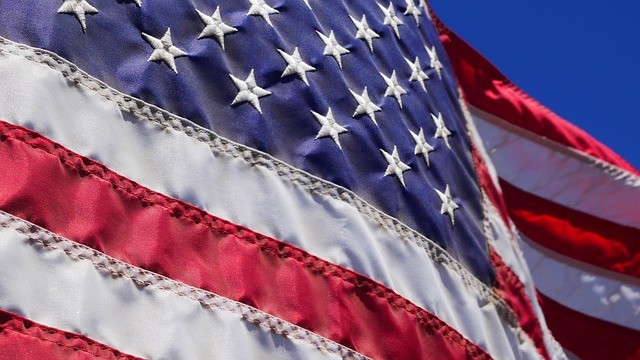VA Loan: Can You Borrow More Than Your House Is Worth?

Can You Borrow More Than Your House Is Worth with a VA Loan?
Here’s a scenario. Let’s say you want to buy a $250,000 home. You qualify for a VA loan and know it will be a $0-down mortgage. The problem is, you want to replace all of the kitchen appliances, and the carpet in the master bedroom has to go.
Then you determine that the total additional amount you’ll need to accomplish all these upgrades is around $6,000.
There is also the matter of the funding fee. This is a one-time payment that is paid to help keep the cost of funding VA loans down for taxpayers. In 2020, it’s anywhere between 2.3 – 3.6% of the total loan amount.
You also realize that you don’t have that in savings and wonder, can I roll all of this into the total loan amount?
>> Have more questions about the VA home loan? For a no-obligation, free consultation regarding your VA Loan eligibility, please go here.
Yes or No?
Unfortunately, the answer isn’t a simple yes or no.
Technically, there is no maximum amount for a VA loan. Since it can sometimes be difficult for those who serve to meet the typical requirements of a standard mortgage, the VA loan with a $0-down requirement was established. While it is an advantage, it also has some peculiarities to it.
How Much Is the VA Loan Entitlement?
A loan amount is determined by comparing the estimated monthly mortgage payment amount versus your monthly income plus the amount you are entitled to and qualify for. In most areas of the country, basic entitlement is $144,000, but with potential bonus entitlements, you could be eligible for up to a total of $417,000. But just because that’s potentially what you could receive, the amount you would actually get is based on market value.
Back to Our Scenario: The Appraiser
The seller accepts your offer of $250,000 and then the VA lender comes in to appraise. The appraiser will look at recent sales of houses in today’s market that are similar to yours – in square footage, location, and other property characteristics – and provide at least 3 sales within the previous 6 months to a year that support the amount agreed upon
Sometimes these numbers align, and sometimes they are a bit higher, but unfortunately, they can also be lower.
If the appraiser returns and agrees with $250,000, you move to the next phase. If he/she comes back and says that the property is actually valued at $260,000 – it doesn’t mean you get that extra equity, but it does mean that you got a good deal.
And if the appraiser comes back and says the property is only worth $230,000, you have to come up with a solution, either by asking the seller to lower their asking price, agreeing to split the difference with the seller, or funding that difference entirely on your own.
So, what about that extra $6,000 and the funding fee?
The funding fee, fortunately, can be financed in the total loan amount, meaning you wouldn’t have to come up with that additional money on the spot. And it’s also important to note that not everyone has to pay this fee. It is usually waived for unmarried surviving spouses and veterans who receive disability compensation.
But that additional $6,000? There’s only one potential loophole there – can the improvements you want to make be considered energy efficient? According to the VA’s website, “by supplying the VA with a completed energy analysis detailing where the savings to your utility expenses will exceed their current expenses, you can add $3,001 to $6,000 to your VA Home Loan.”
Which Improvements are Eligible?
Eligible improvements that are considered:
- Water heater
- Ceiling, attic, and floor insulation (new or additional)
- Caulking and weather stripping
- Insulated garage doors on an attached garage
- Clock thermostats
- Insulation for water heater
- Windows and doors
- Heat pumps
- Permanent air conditioning units
- Solar heating and cooling systems
- Furnaces
- Vapor barriers
Ineligible Improvements According to the VA
The VA points out specifically that the following improvements are ineligible for inclusion with this program:
- Appliances
- Window air conditioner units
- New roofing
- Vinyl siding
- Glass block windows
Do We Qualify?
So in this scenario, you cannot add that $6,000 to your VA loan. We would suggest asking the seller to lower their asking price to compensate for the additional spending that will take place. Or you can see if you qualify for a VA Alteration and Repair Loan ( also known as a Rehab or Renovation Loan).
Depending on your qualifications, an additional loan like this can be rolled into your VA home loan and has the potential to help with at least one of the desired changes in this scenario. There are limitations and downsides, just like with any major money decision, so shop all options available before committing.
>> Have more questions about the VA home loan? For a no-obligation, free consultation regarding your VA Loan eligibility, please go here.
RELATED:
- The VA Loan, A Military Benefit You Should Use
- What Do You Need to Know About VA Loans?
- Best Practices for the VA Loan Process
- VA Loan Limits
- The VA Loan Certificate of Eligibility
- Preparing to Purchase a Home
About the author
Editor-in-Chief Joe Wallace is a 13-year veteran of the United States Air Force and a former reporter/editor for Air Force Television News and the Pentagon Channel. His freelance work includes contract work for Motorola, VALoans.com, and Credit Karma. He is co-founder of Dim Art House in Springfield, Illinois, and spends his non-writing time as an abstract painter, independent publisher, and occasional filmmaker.


